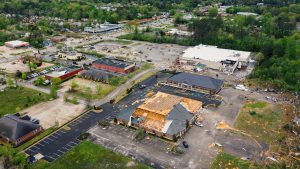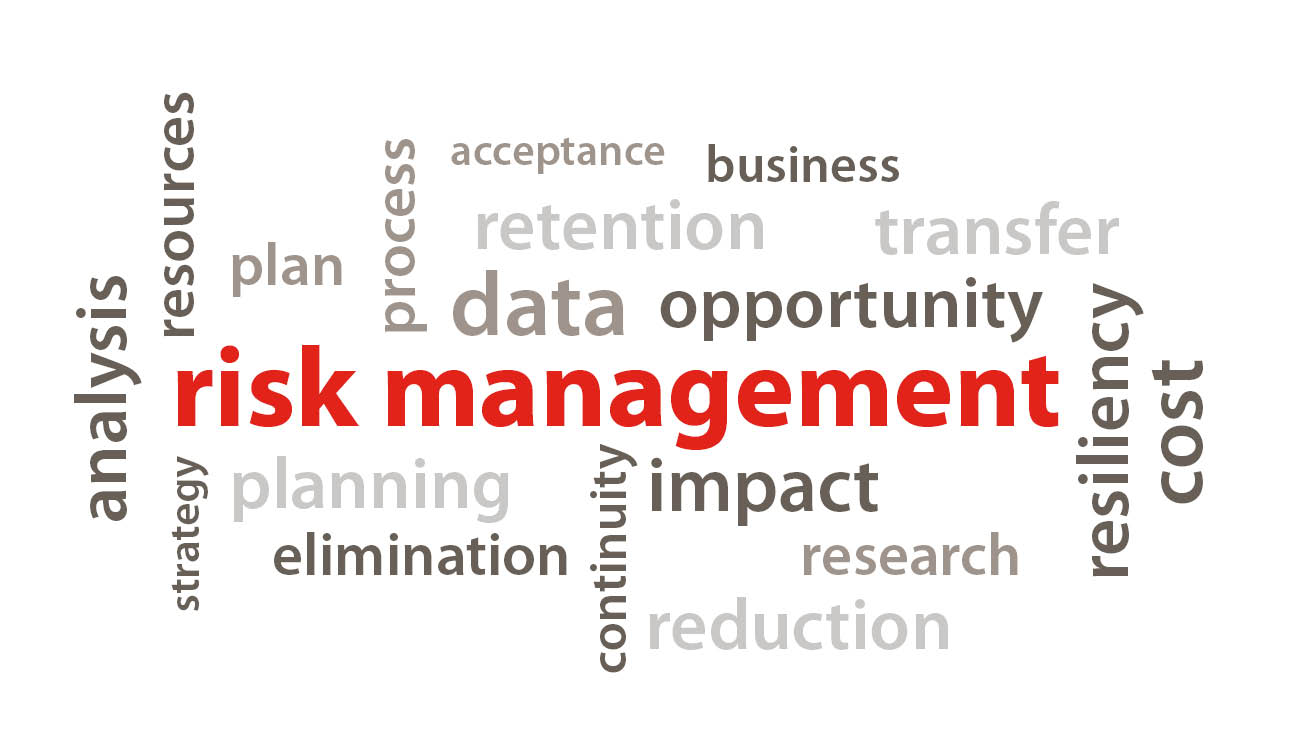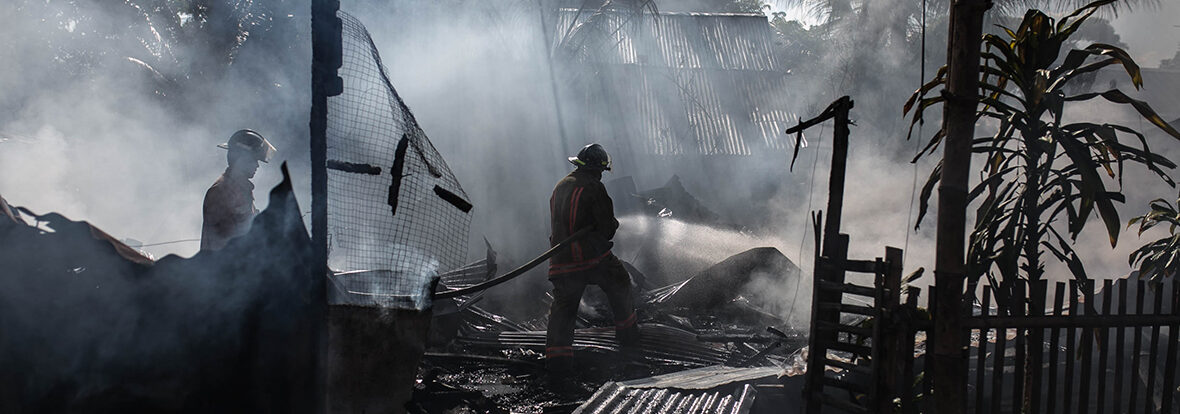Preparing for the Unpredictable
When disaster strikes, disruption to business operations can be enormous, particularly in locations prone to flooding, hurricanes, tornadoes, wildfires, and earthquakes. According to NOAA’s National Centers for Environmental Information, 2021 witnessed 20 separate weather- and climate-related disaster events. Each resulted in more than $1B in losses, with impacted areas suffering “significant economic effects.”
 As these businesses and communities rebuild for the future, individuals should be aware of tools developed that support risk mitigation from the ground up; that is, during the construction phase. Fortunately, in many areas updated zoning and building codes have done much to reduce risks and improve mitigation techniques. Beyond the basics of installing sprinkler systems and generators, consider “safe corridors” to be built so fire and life safety can enter larger buildings that have significant square footage safely. Flood gates and flood mitigation tools is certainly a powerful start. Security cameras, lighting, and alarms are generally standard requirements as part of a holistic mitigation plan. Another often overlooked aspect of risk mitigation is where needed goods and services will be sourced post-disaster. Do you have specialized equipment that can be sourced at a moments notice if needed? Who can bring it back into operation quickly? As your business rebuilds, consider building a redundant supply chain base as well, to reduce dependency on any single vendor.
As these businesses and communities rebuild for the future, individuals should be aware of tools developed that support risk mitigation from the ground up; that is, during the construction phase. Fortunately, in many areas updated zoning and building codes have done much to reduce risks and improve mitigation techniques. Beyond the basics of installing sprinkler systems and generators, consider “safe corridors” to be built so fire and life safety can enter larger buildings that have significant square footage safely. Flood gates and flood mitigation tools is certainly a powerful start. Security cameras, lighting, and alarms are generally standard requirements as part of a holistic mitigation plan. Another often overlooked aspect of risk mitigation is where needed goods and services will be sourced post-disaster. Do you have specialized equipment that can be sourced at a moments notice if needed? Who can bring it back into operation quickly? As your business rebuilds, consider building a redundant supply chain base as well, to reduce dependency on any single vendor.
Know Your Risks
No two disasters are alike. However, there are generally four risk mitigation techniques that can be assessed across a broad range of circumstances:
- Eliminate In general, risks should be eliminated if they involve a high probability of impact for both financial loss and damage. An example would be to discontinue the use of hazardous chemicals if it poses a risk to employees or customers.
- Reduction- The most common mitigation strategy is risk reduction i.e., businesses take some type of action to address a perceived risk and regulate their exposure. Risk reduction usually employs a combination of some risk acceptance and some risk avoidance. If you are close to a river, perhaps flood gates would provide enough protection to reduce potential loss.
- Transfer: Risks that may have a low probability for taking place or cannot be fully mitigated but would have a large financial impact should be reduced by being shared or transferred. Some examples include purchasing insurance, forming a partnership, or outsourcing.
- Accept: With some risks the expenses involved in mitigation is more than the cost of tolerating the risk. In this case, the risks should be accepted and carefully monitored with a plan in case an event occurs.
For years, the GRS Disaster Response team has used these widely accepted approaches as the basis for our customized plans to help each client minimize their risk. The key to successful planning is transparent communication.
Have Meaningful Conversations
 Proactive response can only occur when pre-loss planning is considered. Achieving risk mitigation goals may involve confronting uncomfortable scenarios, such as catastrophic destruction or even loss of life. The more clients are willing to openly discuss the full range of disaster outcomes, the better the outcomes will be for all involved. The occasional dose of levity can also make these conversations be more productive. We’ll share one anecdote.
Proactive response can only occur when pre-loss planning is considered. Achieving risk mitigation goals may involve confronting uncomfortable scenarios, such as catastrophic destruction or even loss of life. The more clients are willing to openly discuss the full range of disaster outcomes, the better the outcomes will be for all involved. The occasional dose of levity can also make these conversations be more productive. We’ll share one anecdote.
During Hurricane Sandy multiple insurers that had their offices on Water Street in downtown Manhattan experienced first-hand what they already knew in practice: that flood waters can completely shut down business in a matter of minutes. A prominent professor at a local college asked some of these business leaders, “Haven’t any of you heard of risk managers?” While he said it in jest, there was a certain amount of truth to his humor. Staging the elevators on the lower floor may not be optimal.
You know your business better than anyone, which is why your time and efforts should be focused there – and on your staff – in a time of crisis. Let the GRS Disaster Response team use our expertise to help you mitigate risk, well before it’s ever needed. Hopefully, you’ll never need it at all. It’s a win-win!
Save the Date
Mark your calendar to hear Jim Wills speak in-person at the American Society for Health Care Risk Management (ASHRM) Conference in Boston September 11-14, 2022.

